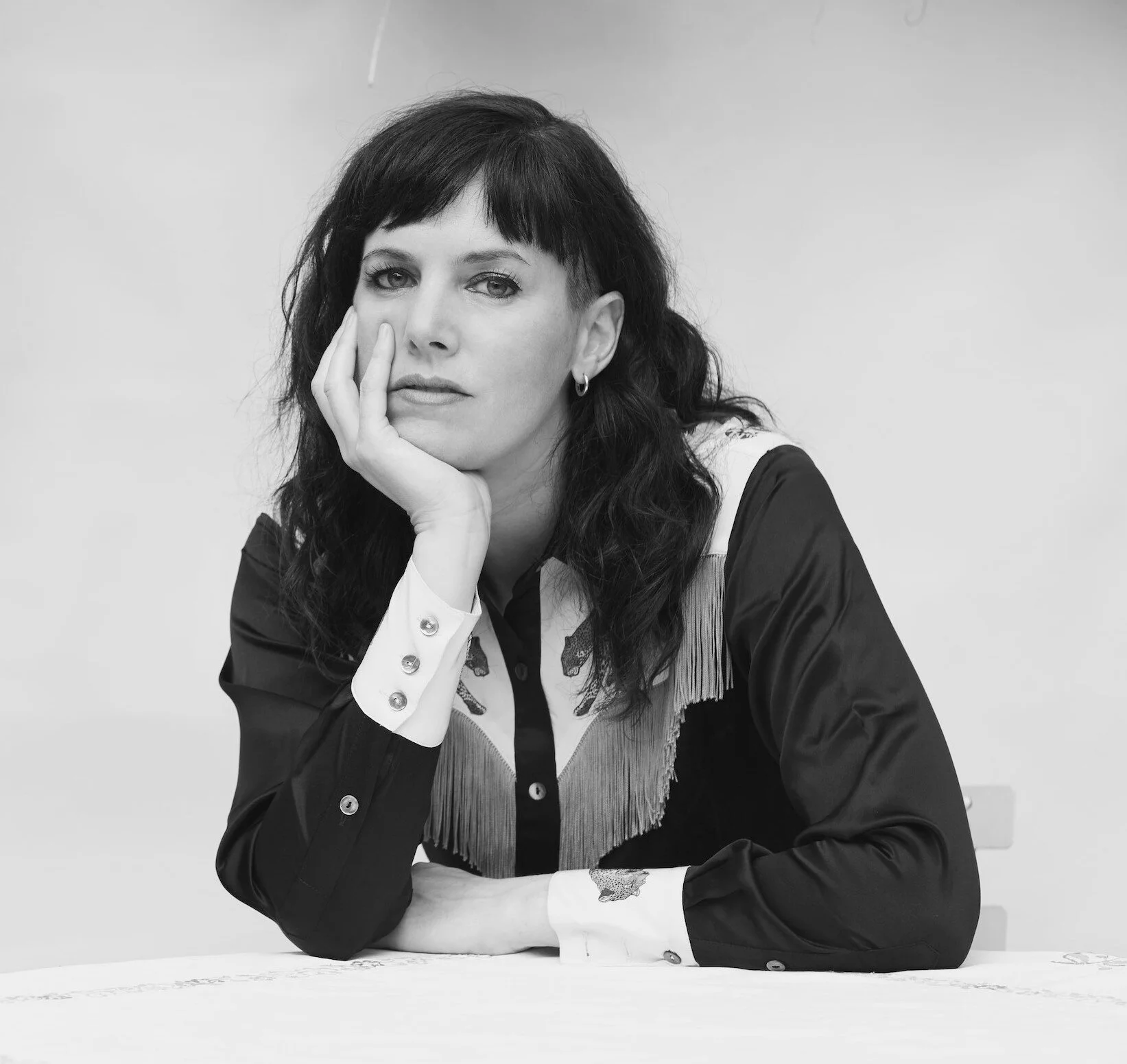TEIJI HAYAMA
“One Million Dots Twiggy,” oil on canvas, 93x110cm, 2020
Teiji Hayama is a Japanese artist currently living and working in Switzerland. Hayama's grayscale paintings depict oddly distorted portraits with bored exhausted faces inspired by old Hollywood celebrities and vintage photography. The portraits of glamorous personage with droopy eyes and long amorphous rubber-like bodies tackles the viewer on how social media fatigue has overburdened humans.
From January 14 through February 13, 2021, GR Gallery in New York will feature a solo exhibition of Hayama’s work titled Ethereal Icons. GR Gallery writes of the exhibit: “The show will reveal sixteen fresh oil paintings on canvas, featuring the artist’s exemplary series that picture elusive movies, music and cultural icons from the sixties, but still rooted in today’s popular imagery, with his signature distorted kaleidoscopic technique. On the second week of the exhibition will be released an exclusive limited edition print signed and numbered by the artist.”
Interview by Mackenzie Aker
I’m curious about your evolution as an artist. Where did you begin, where are you now, and where do you want to go?
After graduating from Central Saint Martins College of Art and Design in London, I started to work as fashion designer. And then, in 2007, I left it all behind to become a full-time artist. I want to stay where I am until the end, I guess...
Your paintings often use traditional oil techniques to create imagery reflective of advertising, pop art, collage, and digital aesthetics. What is the relationship between the analog and the digital in these pieces?
I only use water mixable oil. Images on social media are becoming more and more filtered, digitally manipulated, flawless. I try to depict this trend. With this in mind, my work has to look as if it was digitally manipulated, but there is only traditional oil in it. With my portraits, I depict the overuse of effects and filters in the most honest and simple traditional way.
“Big Tasty,” oil on canvas, 100x 100cm, 2020
Your new solo show at GR Gallery in New York features works of kaleidoscopically distorted images of 60s cultural icons, sometimes juxtaposed with consumer products. What interests you about classic Hollywood and celebrities? What is your intent with manipulating their images in these ways?
I have been working on these iconic Hollywood figures for some time. I find the process by which a celebrity becomes stratospherically famous extremely interesting. It appears to be a mixture of hard work and meticulous social maintenance. With the effect of multiple layered translucent images, I try to emphasize the ephemeral nature of what “celebrity” can be, but not only. The flicker of a camera shutter or rapid, oversaturated succession of images on the social media feed can be read through the illusion of multiple layered translucent images. The effect is a kaleidoscopic portrait that doesn’t hide its inability to memorialize itself but is still hypnotic in effect, demonstrating society’s obsession with the two dimensional image over any three dimensional reality.
Why do you think that classic pop culture icons have such staying power? How do you think recontextualizing or manipulating them visually alters their meanings for contemporary viewers?
They are like the original “vintage influencers”! By depicting my characters with drooping eyes, frowning mouths, tilting heads and hanger-like bodies that have trouble standing upright — as if the weight of the world is too much to bear — I tackle the viewer on how social media fatigue has overburdened humans.
“Spalding Marilyn,” oil on canvas, 125x105cm, 2020
In what ways do you believe celebrity culture has changed since the rise of social media and how does this impact the art world?
In this day and age of quick communications, the word celebrity has been redefined. It is no longer reserved for actors, singers, etc. Celebrity at the most basic level simply means “being known” among a group of people and having a certain opinion that others look up to. Social media has allowed a common person to become the superstar they always looked up to.
Prior to working as a visual artist you studied and worked in the fashion industry. In what ways does fashion influence your practice now?
[My] experiences in fashion are reflected in what I create and [have] became a part of what my art is today.
“Banacola,” oil on canvas, 50x40cm, 2020
“Game,” oil on canvas, 100x120cm, 2020
You have lived and worked in several countries throughout your career. How has this mobility shaped your worldview and approach to artmaking?
Living and working in diverse environments helped me to be more creative and has broadened my worldview. I would say that my art is an amalgamation of these contrasted cultures.
Ethereal Icons is showing at GR Gallery from January 14 through February 13, 2021
View more of Teiji’s work on his site and Instagram
You might also like our interviews with these artists:
Mackenzie Aker is a Montreal-based writer who has worked as a curator, filmmaker and publishing editor. She holds a BFA in art history and film studies from Concordia University and her academic interests include museology, archaeology, and early documentary film. When not writing she spends her days reading in parks, drinking coffee, and listening to metal.










